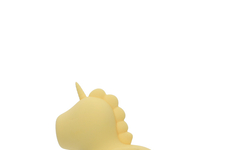
David Ponce began his tech website OhGizmo! as a site dedicated to innovative gadgets and design. Described as a man who is “going to change the world one word (or one syllable) at a time,” David Ponce is a young guy hoping to share his love of innovative technology with the world. He spoke with us about how important trend spotting is in the world of technology and OhGizmo!
12 Questions with David Ponce
1. How did you get involved with OhGizmo! and what motivates you to continue?
I founded OhGizmo! back in January 2005. I had been a devout reader of Gizmodo for some time when Joel Johnson was the sole editor and it struck me one day that there was really nothing about what he was doing that was entirely out of my reach. I was both right and wrong. While I did manage to grow OhGizmo! to a point where it’s earned me an interview on Trend Hunter, Joel did an incredible job with Gizmodo, as did the entire crew that came after he left. We’re nowhere near Gizmodo heights, but we’ve carved ourselves a little spot.
I continue simply because I love this field, I love shiny new gadgets, love writing about them and this is a profitable company. They say you don’t work a day in your life if you do something you love.
2. How significant are the topics of cool hunting and trend spotting to OhGizmo!?
In consumer electronics, you’re not only writing for early adopters and technology aficionados, you’re also talking to a group that’s very conscious of trends. They not only want to know what new things are coming out, but what cool new products are being released. We help them see through the noise, and keeping a finger on the pulse of trends helps in that regard.
3. How do you define a trend?
I define it as a movement that gains in popularity, and subsequently falls down. There’s a specific cycle to trends, from emergence, to adoption and finally to obsolescence. This applies to just about everything, from the fashion industry to industrial design, architecture and consumer electronic design.
4. How do you define cool?
“Cool” in my eyes is a trend that is adopted initially by a specific social group. Sad as it is, we look to certain people to tell us what is cool so in that sense, coolness is dictated and not born. It is adopted by a select few and “passed on” to the rest. To give an example, the recent fondness for Apple products started out by becoming a trendy product among the hipster crowd. You’d see them at cafes working on their MacBooks, looking like they knew something you didn’t. This coupled with a solid product and design from apple started a larger trend that has to this day resulted in a resurgence of a company that many thought extinct at one point.
Or Twitter. Everyone’s using it these days. Why? Because all the celebrities are.
5. Do you need a culture of innovation to create something that is cool?
It helps, but I don’t believe it’s absolutely necessary. You need a product that is solid, that is innovative and well thought out in the first place. But that alone is not enough. There are several good products out there that never get noticed because they fail to get adopted by the right people. Sad as it is, cool is not always a notion that is born organically, on its own. A lot of money, thought and effort goes into not only getting the word out that you’ve done something great, but convincing the right people to start paying attention. Only then will other people start thinking you’ve got something cool going on.
On the other hand, if your product sucks, you can throw all the money and marketing effort at it, you will likely not succeed in convincing anyone that you’re onto something cool.
6. What is the best way to create an infectious idea, product or service?
Build, or make a great product in the first place. That is the most important thing. Innovate. And then, look for the right social group to appeal to, and somehow get them to notice you. Market smartly.
7. What is the key to innovation?
Thinking outside the box. Looking at old problems in new ways. Trying something that may seem counterproductive to see where it takes you and to be willing to accept you’ve gone down the wrong path as many times as it takes to get it right.
8. What is the most important trend you see in your industry?
Right now web services are emerging. Even though OhGizmo! focuses on gadgets and hardware, there is an ever growing interaction between these devices and online services. Just look at the iPhone and what the device would be without being able to connect to the Internet. Televisions are slowly starting to go online, giving you access to a slew of resources that were previously unavailable.
Online services like Pandora, Hulu, Twitter, Facebook, Twitter, Boxee, etc. are expanding the potential of devices that used to be standalone, isolated products with a limited set of features.
9. What are your ambitions for OhGizmo!?
Of course, I’d love to see it grow. I don’t believe it’ll ever be possible for us to go toe-to-toe against Gizmodo or Engadget, but we’ve carved a little corner of the web where readers come to us looking for interesting gadgets that haven’t been covered by the big guys. I’d love to see that niche grow, and eventually launch a network of sites that use the same approach we’ve used on OhGizmo.
10. How do you reset yourself to be creative? Do you have any rituals?
To be perfectly honest, I don’t consider myself an especially creative person. Analytical, reflective, logical, sure… but creativity is something that comes with difficulty to me. The only times where I have been creative were in social settings, where I’d be able to bounce ideas off other people and let them grow.
11. Professionally, what do you want to be doing in 10 years?
I love what I do. I love being able to work from anywhere. Ideally, I’d do this for the rest of my days. I’d love to live a life that consists of making decisions and answering to emails. Some article writing now and then, but the management of the business stimulates me.
12. What are your most important hobbies?
I do competitive ballroom dancing. It’s called Dancesport. It’s popular in Europe and most people stateside look at me with glassy eyes when I tell them. But it is a sport, and it is great exercise, and I do spend a tremendous amount of time doing it.
12 Questions with David Ponce
1. How did you get involved with OhGizmo! and what motivates you to continue?
I founded OhGizmo! back in January 2005. I had been a devout reader of Gizmodo for some time when Joel Johnson was the sole editor and it struck me one day that there was really nothing about what he was doing that was entirely out of my reach. I was both right and wrong. While I did manage to grow OhGizmo! to a point where it’s earned me an interview on Trend Hunter, Joel did an incredible job with Gizmodo, as did the entire crew that came after he left. We’re nowhere near Gizmodo heights, but we’ve carved ourselves a little spot.
I continue simply because I love this field, I love shiny new gadgets, love writing about them and this is a profitable company. They say you don’t work a day in your life if you do something you love.
2. How significant are the topics of cool hunting and trend spotting to OhGizmo!?
In consumer electronics, you’re not only writing for early adopters and technology aficionados, you’re also talking to a group that’s very conscious of trends. They not only want to know what new things are coming out, but what cool new products are being released. We help them see through the noise, and keeping a finger on the pulse of trends helps in that regard.
3. How do you define a trend?
I define it as a movement that gains in popularity, and subsequently falls down. There’s a specific cycle to trends, from emergence, to adoption and finally to obsolescence. This applies to just about everything, from the fashion industry to industrial design, architecture and consumer electronic design.
4. How do you define cool?
“Cool” in my eyes is a trend that is adopted initially by a specific social group. Sad as it is, we look to certain people to tell us what is cool so in that sense, coolness is dictated and not born. It is adopted by a select few and “passed on” to the rest. To give an example, the recent fondness for Apple products started out by becoming a trendy product among the hipster crowd. You’d see them at cafes working on their MacBooks, looking like they knew something you didn’t. This coupled with a solid product and design from apple started a larger trend that has to this day resulted in a resurgence of a company that many thought extinct at one point.
Or Twitter. Everyone’s using it these days. Why? Because all the celebrities are.
5. Do you need a culture of innovation to create something that is cool?
It helps, but I don’t believe it’s absolutely necessary. You need a product that is solid, that is innovative and well thought out in the first place. But that alone is not enough. There are several good products out there that never get noticed because they fail to get adopted by the right people. Sad as it is, cool is not always a notion that is born organically, on its own. A lot of money, thought and effort goes into not only getting the word out that you’ve done something great, but convincing the right people to start paying attention. Only then will other people start thinking you’ve got something cool going on.
On the other hand, if your product sucks, you can throw all the money and marketing effort at it, you will likely not succeed in convincing anyone that you’re onto something cool.
6. What is the best way to create an infectious idea, product or service?
Build, or make a great product in the first place. That is the most important thing. Innovate. And then, look for the right social group to appeal to, and somehow get them to notice you. Market smartly.
7. What is the key to innovation?
Thinking outside the box. Looking at old problems in new ways. Trying something that may seem counterproductive to see where it takes you and to be willing to accept you’ve gone down the wrong path as many times as it takes to get it right.
8. What is the most important trend you see in your industry?
Right now web services are emerging. Even though OhGizmo! focuses on gadgets and hardware, there is an ever growing interaction between these devices and online services. Just look at the iPhone and what the device would be without being able to connect to the Internet. Televisions are slowly starting to go online, giving you access to a slew of resources that were previously unavailable.
Online services like Pandora, Hulu, Twitter, Facebook, Twitter, Boxee, etc. are expanding the potential of devices that used to be standalone, isolated products with a limited set of features.
9. What are your ambitions for OhGizmo!?
Of course, I’d love to see it grow. I don’t believe it’ll ever be possible for us to go toe-to-toe against Gizmodo or Engadget, but we’ve carved a little corner of the web where readers come to us looking for interesting gadgets that haven’t been covered by the big guys. I’d love to see that niche grow, and eventually launch a network of sites that use the same approach we’ve used on OhGizmo.
10. How do you reset yourself to be creative? Do you have any rituals?
To be perfectly honest, I don’t consider myself an especially creative person. Analytical, reflective, logical, sure… but creativity is something that comes with difficulty to me. The only times where I have been creative were in social settings, where I’d be able to bounce ideas off other people and let them grow.
11. Professionally, what do you want to be doing in 10 years?
I love what I do. I love being able to work from anywhere. Ideally, I’d do this for the rest of my days. I’d love to live a life that consists of making decisions and answering to emails. Some article writing now and then, but the management of the business stimulates me.
12. What are your most important hobbies?
I do competitive ballroom dancing. It’s called Dancesport. It’s popular in Europe and most people stateside look at me with glassy eyes when I tell them. But it is a sport, and it is great exercise, and I do spend a tremendous amount of time doing it.
Trend Themes
1. Trend Spotting - Keeping a finger on the pulse of trends helps to see through the noise and provides valuable insight in the tech industry.
2. Web Services - Web services are expanding the potential of gadgets and devices that used to be standalone, isolated products with limited features.
3. Innovation - Innovation requires thinking outside the box and looking at old problems in new ways.
Industry Implications
1. Consumer Electronics - Consumer electronics is an industry that requires a focus on trend spotting, cool hunting and innovation to stay relevant in an ever-changing market.
2. Technology - Technology is an industry where web services, gadgets and devices are evolving and expanding at a rapid pace, creating innovative opportunities that require trend spotting skills.
3. Online Services - As web services become an increasingly important part of the technology industry, it is important to stay on top of trends and innovation in order to keep up with changing demands.
2.4
Score
Popularity
Activity
Freshness























